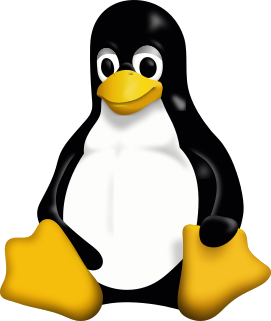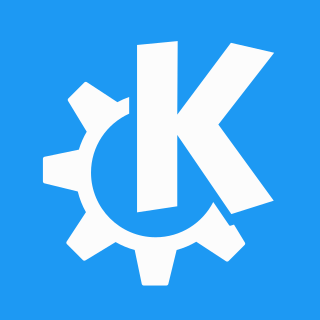The Dock is a prominent feature of the graphical user interface of the macOS operating system. It is used to launch applications and to switch between running applications. The Dock is also a prominent feature of macOS's predecessor NeXTSTEP and OpenStep operating systems. The earliest known implementations of a dock are found in operating systems such as RISC OS and NeXTSTEP. iOS has its own version of the Dock for iPhone, iPod Touch and iPad.
Yahoo Widgets was a free application platform for Mac OS X and Microsoft Windows, specifically Windows XP, Vista and Win 7. The software was previously called Konfabulator, but after being acquired by computer services company Yahoo on July 25, 2005 it was rebranded. The name Konfabulator was subsequently reinstated as the name of the underlying rendering engine. The engine uses a JavaScript runtime environment combined with an XML interpreter to run small applications referred to as widgets, and hence is part of a class of software applications called widget engines. On February 27, 2012 Yahoo updated the License agreement stating that as of April 3, 2012 Yahoo! Widgets will continue to be available for download but support & Development would stop.
A taskbar is an element of a graphical user interface which has various purposes. It typically shows which programs are currently running.

In computing, a theme is a preset package containing graphical appearance details. A theme usually comprises a set of shapes and colors for the graphical control elements, the window decoration and the window. Themes are used to customize the look and feel of a piece of computer software or of an operating system.
A menu bar is a graphical control element which contains drop-down menus.
A compositing window manager, or compositor, is a window manager that provides applications with an off-screen buffer for each window. The window manager composites the window buffers into an image representing the screen and writes the result into the display memory.
Parallels Desktop for Mac, by Parallels, is software providing hardware virtualization for Macintosh computers with Intel processors.

Wubi is a discontinued free software Ubuntu installer, that was the official Windows-based software, from 2008 until 2013, to install Ubuntu from within Windows, to a single file within an existing Windows partition.
Avant Window Navigator is a dock-like bar for Linux, which sits on an edge of a user's screen and tracks open windows. Instead of representing open windows as buttons or segments on a bar, it uses large icons on a translucent background to increase readability and add visual appeal. The program was created by Neil J. Patel.
An application launcher is a computer program that helps a user to locate and start other computer programs. An application launcher provides shortcuts to computer programs, and stores the shortcuts in one place so they are easier to find.
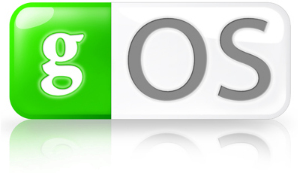
gOS or "good OS" was an Ubuntu-based Linux distribution created by Good OS LLC, a Los Angeles-based corporation. Its CIO David Liu described that after meeting Enlightenment and open source people, he realized that his dream to bring Web 2.0 applications into mainstream use could be achieved by creating a Linux distribution that made it easy for users to access Google and Web 2.0 applications. David Liu went on to create the Chinese Twitter clone called Wozai (我在), leaving gOS officially defunct.
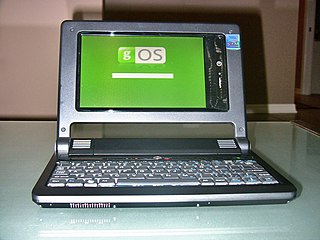
The CloudBook is a discontinued x86 subnotebook, or Ultra-Mobile PC developed by Everex using a VIA processor, chipset, and NanoBook reference design. It competed with the Asus Eee PC, the OLPC XO-1 and the Classmate PC. The device was categorized as a netbook when it was around 2008.

MediaFire is a file hosting, file synchronization, and cloud storage service based in Shenandoah, Texas, United States. Founded in June 2006 by Derek Labian and Tom Langridge, the company provides client software for Microsoft Windows, macOS, Linux, Android, iOS, BlackBerry 10, and web browsers. MediaFire has 43 million registered users and attracted 1.3 billion unique visitors to its domain in 2012.
In computing, the icon bar is the name of the dock in Acorn's RISC OS operating system, and is fundamental to the OS. Its introduction in 1987 was a new concept in GUIs. It displays icons through which access is provided to all parts of the computer that a typical user will require, from physical devices and system utilities to running applications, and will usually be their starting point for interacting with the system once it has finished booting.
In free software, Zeitgeist is a software service which logs the users's activities and events, anywhere from files opened to websites visited and conversations. It makes this information readily available for other applications to use in the form of timelines and statistics. It is able to establish relationships between items based on similarity and usage patterns by applying data association algorithms such as "Winepi" and "Apriori".

Unity is a graphical shell for the GNOME desktop environment originally developed by Canonical Ltd. for its Ubuntu operating system. Unity debuted in the netbook edition of Ubuntu 10.10. It was initially designed to make more efficient use of space given the limited screen size of netbooks, including, for example, a vertical application switcher called the launcher, and a space-saving horizontal multipurpose top menu bar.

MATE is a desktop environment composed of free and open-source software that runs on Linux and most BSD Unix derivatives.
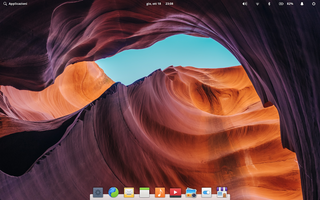
elementary OS is a Linux distribution based on Ubuntu. It is the flagship distribution to showcase the Pantheon desktop environment. The distribution promotes itself as a “fast, open, and privacy-respecting” replacement to macOS and Windows. It focuses mainly on non-technical users, and has a pay-what-you-want model. The OS is developed by elementary, Inc.

BackSlash Linux is an Ubuntu and Debian-based operating system developed in India by Kumar Priyansh for AMD64 and Intel x64-based personal computers. It is based on free software and every release of the operating system is named after the characters of the 2013 Disney film Frozen. Since the third major release, BackSlash Linux Olaf, BackSlash Linux has used its own custom version of KDE, called the BackSlash Shell, as the default user desktop.

